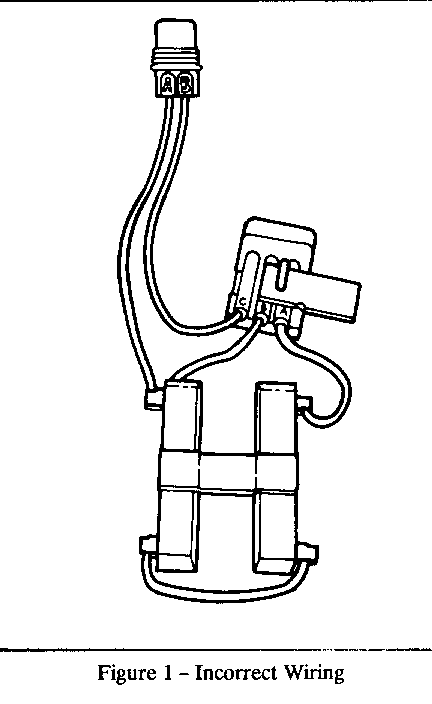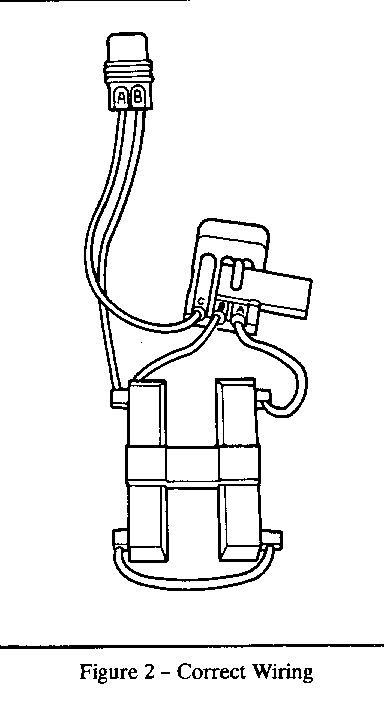ENGINE OVERHEAT; BCM CODE F49 COOLING FAN RUNNING BACKWARDS

SUBJECT: ENGINE OVERHEATS; BCM CODE F49
MODELS AFFECTED: 1990 DE VILLES AND FLEETWOODS
This bulletin supersedes Service Bulletin T-90-103 (Corporate reference number 016201) which should be discarded. This bulletin is being revised to correct technical information, update procedure, and add a new part.
Some 1990 DeVilles and Fleetwoods produced prior to VIN 347520 may experience an engine overheating or BCM code F49 due to the left (driver's side) cooling fan running backward in high ambient temperatures. The cooling fan should draw air from the grille through the radiator. Miswired fans will push air from the engine compartment out through the radiator. This condition may be caused by a miswired resistor harness for the left cooling fan. Refer to Figure 1.
To repair this condition obtain the proper terminal removal tool from J-38125 Terminal Repair Kit and perform the following procedure:
1. Disconnect the two-way connector at the left cooling fan motor.
2. Unseat the terminals in the two-way, pull-to-seat connector (cavity A and B).
3. Cut off and discard terminals.
4. Reinstall the wires in the two-way connector so that:
o the wire in cavity A is connected to cavity C of the three-way harness connector.
o the wire in cavity B is connected to the resistor block.
5. Install two new pull-to-seat terminals, P/N 12033997, and reseat terminals in the two-way connector.
The jumper should appear as in Figure 2 when completed. If the engine overheating condition or BCM codes still exist after correcting the cooling fan condition, refer to symptom diagnosis in Section 6B of the 1990 DeVille/Fleetwood Service Information Manual or to Section 8D as appropriate.
Parts are currently available from GMSPO.
For warranty purposes use Labor Operation N6270 at .3 hour.


General Motors bulletins are intended for use by professional technicians, not a "do-it-yourselfer". They are written to inform those technicians of conditions that may occur on some vehicles, or to provide information that could assist in the proper service of a vehicle. Properly trained technicians have the equipment, tools, safety instructions and know-how to do a job properly and safely. If a condition is described, do not assume that the bulletin applies to your vehicle, or that your vehicle will have that condition. See a General Motors dealer servicing your brand of General Motors vehicle for information on whether your vehicle may benefit from the information.
